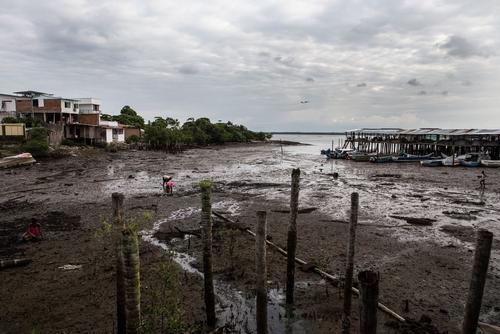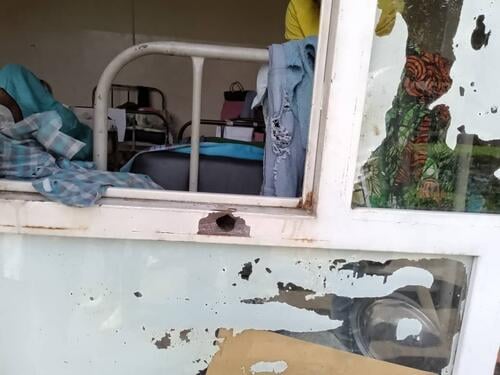In April, during an emergency response to help displaced people in Chocó department in northwestern Colombia, our team detected an unusual increase in the number of malaria cases. However, this was not what surprised us the most. Historically in Colombia, as in the rest of Latin America, the type of malaria we usually see is caused by the vivax parasite, but this year there were also many cases caused by the falciparum strain, a variant that causes the most severe form of the disease.
Before analysing this fact in more detail, a few things should be considered to better understand the context. In Colombia, malaria is endemic. It is estimated that 85 per cent of the country’s territory has the necessary climatic conditions for the anopheles mosquito (the vector that transmits the disease) to be able to live and reproduce. In addition, 60 per cent of the Colombian population lives in areas at risk. This is the case in Chocó, which is located on the Pacific Coast, one of the country’s three major outbreak hotspots. In addition, every five or six years there is an outbreak attributed to the El Niño phenomenon, which alters rainfall patterns that then increase mosquito breeding. The last outbreak was in 2010 and at that time more than 117,000 cases were reported; 71 per cent were vivax and 28 per cent falciparum.
In the first six months of 2016, Colombia has registered more than 50,500 cases of malaria, exceeding in just half a year the total number of cases in 2014 and 2015. Ninety-eight per cent have been simple cases: 60 per cent falciparum, 35 per cent vivax, and 3 per cent due to co-infection with both strains. The cause of this changing pattern is still unknown, but if it is happening in Colombia, it may also be happening (or end up happening) in other countries in the region, like Venezuela or Brazil.
Different treatments for each malaria strain
Both the falciparum and vivax strains of malaria can cause death. If left untreated, the vivax parasite can survive in the liver and cause acute kidney, liver and lung failure with fatal consequences. The falciparum malaria strain causes the most lethal form of the disease, cerebral malaria, and has a higher associated mortality rate, mainly in the most vulnerable groups, namely children, the elderly and pregnant women.
Although treatment for both strains of the disease is completely different, as they are different molecules, both are highly effective if administered in time.
There are also cases of people co-infected with both malaria strains. Most of these patients have to be admitted to hospital and treated for both strains, so recovery is usually slower and complications may sometimes arise.
The change in the malaria pattern this year also surprised the Colombian Ministry of Health, who lacked sufficient supply of treatment for the falciparum malaria strain and could not obtain any for more than three months through the mechanism established by the Global Fund to Fight AIDS, Tuberculosis and Malaria. For this reason, at the end of May, MSF donated 20,000 treatments for simple cases and 400 for complicated cases, which were distributed by local health workers in the most-affected areas. Our teams also distributed mosquito nets in certain areas of Chocó to try to reduce the number of new infections as much as possible.
The malaria peak is over and we’ve gone back to dealing with the usual number of cases in endemic areas. But if the trend toward increased cases of falciparum malaria is confirmed, the Ministry of Health will have to adapt their plan and budget for this new reality in the country. Otherwise, there is a risk of increased mortality and a rise in the number of complicated cases. But this hasn’t been established for the moment.
Fighting against the anopheles mosquito
Colombia has a good system of epidemiological monitoring. Malaria cases are collated and published each week. In addition, within its malaria programme, there are the “malarios”, staff who are trained to work in vector control (fumigating, preventing breeding, etc.), and who are very well perceived by the community.
However, some areas of the Colombia are extremely difficult to access. For example, Chocó is a region with large rivers and no roads. Transportation is very expensive, so it is extremely difficult to reach populations who live far away from waterways. It is a very neglected area, where many health posts are empty due to a lack of staff. For decades, the population of Chocó has also been affected by internal conflict and violence from armed actors.
Even with these difficulties, the number of malaria cases in Colombia (like in many other Latin American countries) had been brought under control, in line with the Millennium Development Goals for the region, established in 2000, which sought to halt or start to reduce the incidence of malaria cases and other major diseases by 2015. However, in the last three years, the number of malaria cases in the country has risen again.
The emergence of the chikungunya and Zika viruses, and the efforts undertaken to combat the aedes mosquito (the vector that transmits these diseases and also dengue fever and yellow fever), may have contributed to a neglect of anopheles vector control, which is vital for controlling malaria cases.
In the coming years, we will have to closely monitor the development of this issue in Colombia and the rest of the region, to ensure we do not back down in the fight against malaria. And to ensure that we are able to adapt to the new realities and that they do not translate into diseases and avoidable deaths.






